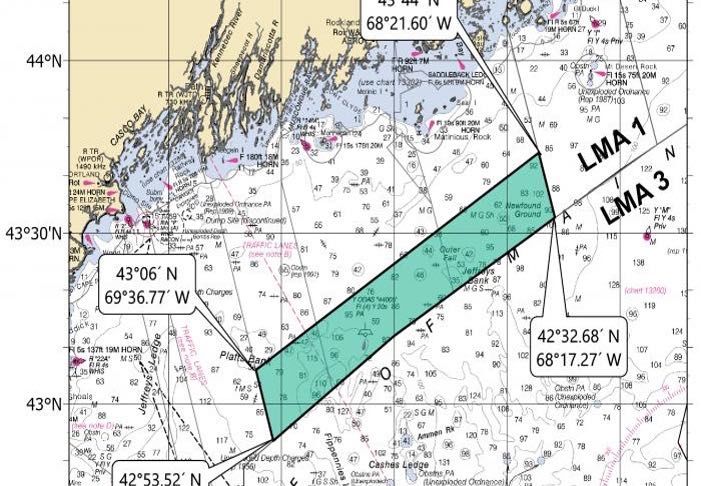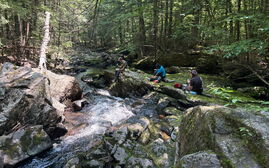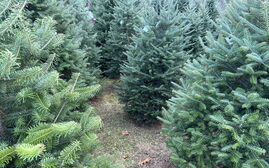Industry, politicians deplore reinstatement of lobster fishing closure
 Courtesy / National Marine Fisheries Service
It’s expected that it will take two weeks for lobster fishermen to remove all of their gear from a large swath of offshore water, depicted in green, that was abruptly closed on Tuesday.
Courtesy / National Marine Fisheries Service
It’s expected that it will take two weeks for lobster fishermen to remove all of their gear from a large swath of offshore water, depicted in green, that was abruptly closed on Tuesday.
As lobster fishermen face an immediate requirement to remove their traps from a swath of offshore waters, the Maine Lobstermen’s Association on Wednesday said the seasonal closure will create economic hardship for many Mainers who have invested in gear, rigged up and are already fishing in the area.
Gov. Janet Mills also said the sudden closure will cause significant economic hardship for Maine’s lobster industry, “will cost hundreds of fishermen millions of dollars, and will have a profound impact on businesses that rely on landings during the lucrative late fall and winter months.”
The statements responded to the newly enacted seasonal closure on 967 square miles of lobstering territory in the Gulf of Maine. The closure was reinstated Tuesday when the 1st U.S. Circuit Court of Appeals stayed a preliminary injunction by a lower court preventing the shutdown from going into effect.
The closure is part of a plan, issued by the National Marine Fisheries Service on Aug. 31, that aims to protect the endangered North Atlantic right whale by creating new requirements affecting Maine lobstermen. In addition to the October-through-January closure, the plan includes mandates for additional gear marking and gear modifications.
The National Marine Fisheries Service on Wednesday issued a notice that fishermen must remove all trap gear from the area. The area will remain closed through Jan. 31, 2022.
Given the capacity of offshore fishing vessels to remove and relocate trawls as well as potential weather and safety concerns, the service said it anticipated it could take up to two weeks for all gear to be removed from the area.
The area was created to protect the whales from entanglement with buoy lines in an area considered to be high-risk. The determination was based on whale sightings and acoustic detections, according to the service.
Fishermen who are part of a research project and have obtained appropriate state and federal permit exemptions may fish in the area with ropeless gear.
The Maine Lobstermen’s Association said there are “significant flaws” in the determination that weren’t presented to the appeals court.
The decision “foreshadows the grave future our lobster fishery faces if NMFS’s 10- year whale plan is not rescinded in favor of a plan based on science,” the association’s executive director, Patrice McCarron, said in a news release.
In a separate statement, Maine Department of Marine Resources Commissioner Patrick Keliher noted the operational and safety challenges posed by the recent court decisions.
“This industry is suffering from whiplash, trying to change plans based on these rapidly evolving court decisions,” said Keliher. “Moving gear around 30 miles offshore at this time of the year also poses a serious safety risk for fishermen. Fishermen’s lives are at stake and NOAA and the courts have an obligation to take fisherman safety into concern when they make these decisions.”
Last month, the department’s science staff deployed seven archival sound traps throughout the Gulf of Maine, including one in the restricted area, to listen for right whales. The sound traps are expected to provide data to better understand right whale habitat use in the Gulf of Maine and ensure that management measures are based on sound science.
“Improved science will mean better outcomes for right whales and for Maine’s vital lobster industry,” said Mills.














0 Comments